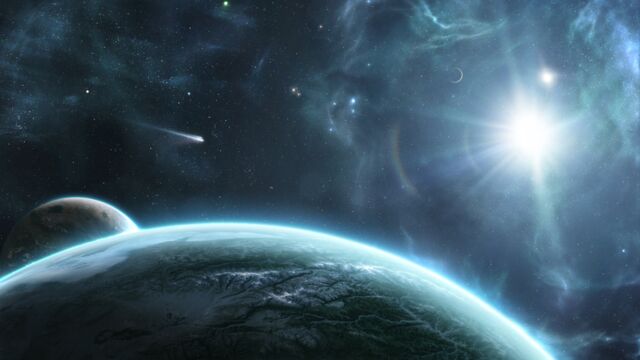We May Witness a Planet Being Born for the First Time Ever

Researchers managed to get footage of a swirl of dust and gas spinning around a star, which suggests that a new planet is about to be born. This new discovery might be our chance to learn more about the enigmatic formation of planets.
It has fascinated astronomers for years. The star AB Aurigae is surrounded by a thick swirl of dust and gas, a kind of “cosmic placenta.” Surrounding conditions are ideal for the birth of a new giant planet. And that’s exactly what's going to happen about 520 light-years away from Earth. Researchers at PSL University noticed spiral structures in the star's disc, which had never been observed before and may signal that the star is growing.
Discover our latest podcast
Solid proof, a first
According to their study, published in the journal Astronomy & Astrophysics on May 20, 2020, this observation is likely a manifestation of the interactions between the soon-to-be-born planet and the gaseous dusty material that surrounds and “feeds” it, creating “disturbances in the disc in the form of a wave, somewhat like the wake of a boat on a lake," explained Emmanuel Di Folco of the Laboratory of Astrophysics of Bordeaux (LAB), who participated in the research, in a press release.
More under this adMore under this adAs the planet continues to revolve around its star - about as far from the star as Neptune is from the Sun - this “wave” will eventually take the form of a spiral arm. Astronomers managed to take images that show a very bright yellow “twist” that marks the spot where a star may be coming into existence. These unpublished observations are the first-ever solid evidence of the birth of a “baby planet”.
A new and important discovery
To observe this phenomenon, scientists used an instrument called a Spectro-Polarimetric Exoplanet REsearch (SPHERE), on the Very Large Telescope (VLT) of the European Southern Observatory (ESO) in Chile. The tool - originally designed to search for exoplanets - eliminates blinding light from host stars. Thanks to this feature, they were able to discover the fascinating environment surrounding it, in the constellation of The Charioteer.
More under this adMore under this adUntil now, astronomers had not been able to take images sharp enough and deep enough to spot the twist. But they have now! In the future, AB Aurigae observations are expected to reveal new details about this future planet, such as its mass or orbit. These clues will be crucial in helping researchers better understand the process of the creation of these stars, which is still very much a mystery.
According to Anthony Boccaletti, who led the study from the Paris Observatory:
We would need a much bigger telescope to go even closer to the star; to see even closer to the spiral. If we were able to resolve the gas around the planet, then we can know the dynamic of the gas and how it falls on the planet.More under this ad